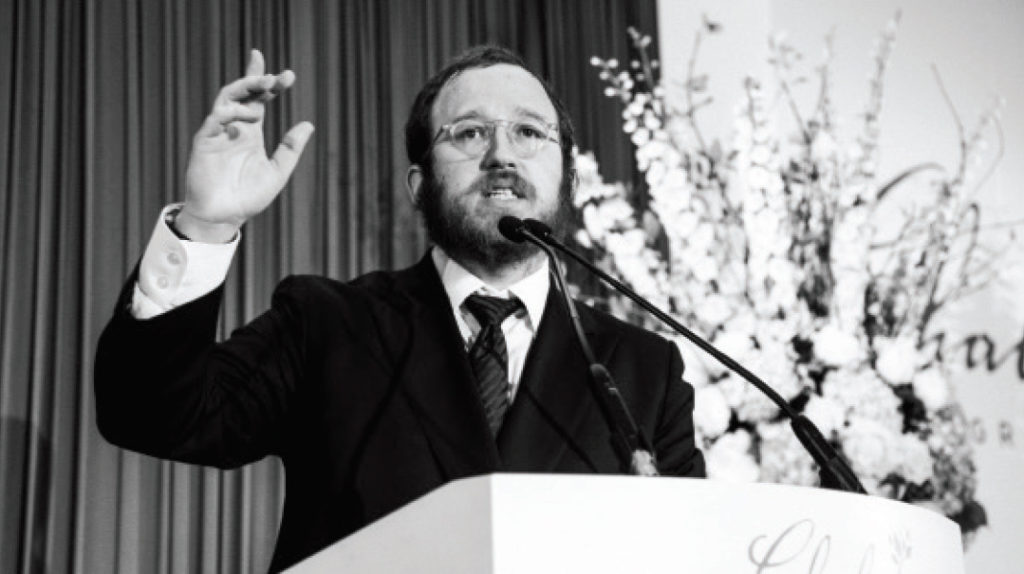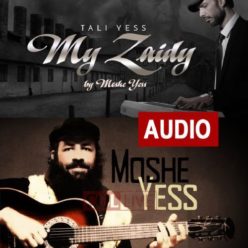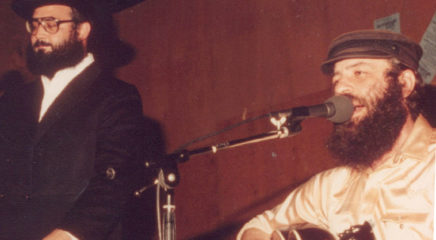"The Baal HaTanya famously said that niggun is the pen of the soul. There is so much that can be conveyed in words, but niggun steps in where they fall short"
R
ABBI MENDEL KALMENSON, author of several books including Seeds of Wisdom and A Time to Heal, is the rabbi of Beit Baruch and executive director of Chabad of Belgravia, London
HOW MUSIC AWAKENS JEWISH HEARTS
The Baal HaTanya famously said that niggun is the pen of the soul. There is so much that can be conveyed in words, but niggun steps in where they fall short. In kiruv, where it’s not just about conveying information but offering inspiration to activate a soul, niggun is key.
Our approach is that every Jewish neshamah is intact and holy and remembers the Torah it was taught before birth. One of the ways to awaken a sleeping neshamah is through song.
THE SONGS I FIND MOST MEANINGFUL
Mostly wordless melodies from Chabad or Modzhitz. Words limit, and the reach of a niggun without them is infinite. It’s not about me taking people somewhere I think they need to go. It’s about allowing the neshamah to go where it needs to go and facilitates an encounter with the Divine spark inside.
THE RECIPE FOR SHABBOS TABLE MAGIC
As a kid in the bungalow colony, I would be running around outside with friends, and my father would hunt me down to bring me in for Shalosh Seudos, the final period of Shabbos which in Chabad, as in other chassidic groups, is reserved for niggunim. I wanted to know what the point was. I didn’t understand the Torah, which was in Yiddish, and I didn’t know the niggunim. My father’s response was that even if I didn’t understand, my soul was being nourished. I believe that niggunim have an effect on the subconscious even if you don’t know the tunes. So if people get excited by singing “Oseh Shalom” and “Yerushalayim Shel Zahav,” we’ll sing those. But I still believe that the experience of pure, holy niggunim can impact someone who doesn’t yet know alef beis.
THE SPECIAL POWER OF A NIGGUN
There’s the melody known as the “Niggun Hachanah,” which is traditionally sung before a maamar, to bringing people into the right frame of mind.
MY FAVORITE SONG STORY
I’m a shaliach in Central London, and we have a major supporter who comes from the Soviet Union. He told me early on that he really dislikes music and singing. But I know that the neshamah benefits from neginah, even if there is no natural appreciation, and we continued to draw on the power of song. A few years later, he was actually asking for us to sing.
A NEVER-FAIL WARM-UP
It depends on the occasion. On Sukkos we have a kumzitz of a few hundred young professionals. I’ll start with the niggun “Aiy, di li li ly ly ly ly ly, Aiy, di li li ly ly ly ly ly…” which has a mantra-like vibe and is very easy to learn and sing. This allows people to be able to pull it up later on their own. Every Motzaei Shabbos, I teach a niggun. These are people who can’t tell you who Avraham Avinu was, but they can sense something soulful. Very often, with new people, I’ll ask them if they remember any Jewish songs from their childhood—and if they know the Mah Nishtanah. If they do, I’ll sing it with them, any time of the year. Those memories run deep, and people like to hear songs which they already know.
WHAT WE DO ABOUT THE HEBREW WORDS
If I use a niggun for a section of davening, I stop the davening and I explain what the coming section is, then we sing it.
ENGLISH SONGS THAT ARE GOOD CONNECTORS
Moshe Yess a”h and Abie Rotenberg both wrote beautiful songs, universally relevant to Jewish people. Once on the High Holidays, I used the song “My Zaidy” in a speech to make the point that more important than how Jewish your grandparents were, is how Jewish your children will be. Such songs are very precious because they engender a conscious affiliation with a value.
OUR FAVORITE SHAVUOS SONGS
We’ll sing the Baal Shem Tov’s niggun as it’s his yahrtzeit. In Chabad, we sing the niggunim of a tzaddik on his yahrzeit, and at the farbrengen at the close of each Yom Tov we go through the niggunim from the Baal Shem Tov to the Maggid of Mezeritch and down through the line of the rebbes.
(Originally featured in Mishpacha, Issue 812)



